Pregnancy and parenthood are overwhelming even in the most ideal circumstances. For some, the time before a baby arrives is spent choosing the right stroller or figuring out how to install a car seat. But for parents without stable housing or income, the stakes are higher. Every decision feels critical: rent or diapers, formula or gas, all while trying to get enough nourishing food to support a healthy pregnancy.
For 36 years, Homeless Prenatal Program (HPP) has helped lighten the load for expecting parents by providing the tools and support they need to build healthy, stable families. Located in San Francisco’s Mission District, HPP connects pregnant people and their partners with parenting classes, case management, housing support, and fresh groceries through a long-standing partnership with the San Francisco-Marin Food Bank.
For many staff members, the work is deeply personal.
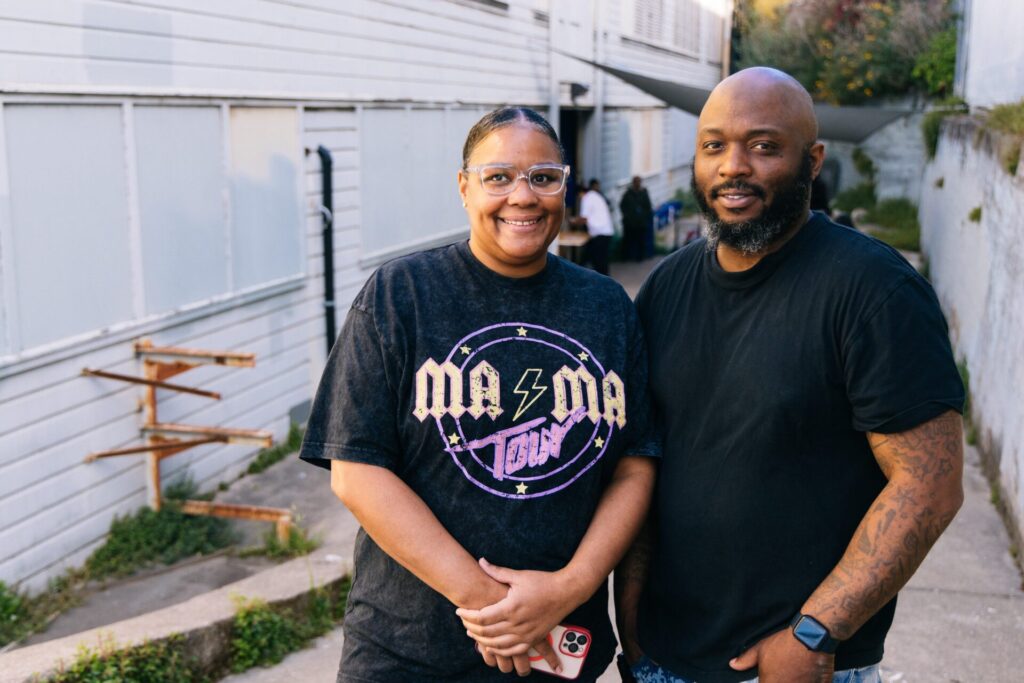
“My journey started here,” declares Mike Brown, a Community Staff Member at HPP. “I used these services before, and now I’m able to give back. I owe it.”
Mike oversees the same pantry line he once stood in as a kid. His connection to the Food Bank goes back decades, to when his mom turned to HPP for support while raising him on her own and trying to get by during unemployment.
“My mom had me young,” he says. “So we basically grew up together.” He remembers the palpable relief of leaving the pantry with food. It’s why he admires his mother for the strength it took to ask for help, and why he understands how much that support means to families.
“Whether it’s a bag of rice or the eggs this week, it’s all very necessary,” Mike says. “It may be just some carrots and some radishes, but that goes a long way when you have nothing.”
As Mike shares his story, Rashawna nods in agreement. She found HPP in 2009, when she was pregnant and full of questions. “Back then, there were not many mom classes available,” she recalls. “[HPP] had the support I needed.”
Through breastfeeding education and peer support, she was able to prepare for her growing family. And with crucial access to fresh produce and pantry staples from the Food Bank, she built a stable foundation for her and her child.
“It was feeding me, it was feeding my children. It was putting food in the household,” Rashawna says. “When you don’t have that money to make ends meet, then you have the food [from the Food Bank] to rely on. Even if you’re vegetarian, you can make a really good meal.”
The support she received was transformative, and Rashawna is now an intern in HPP’s paid community health worker apprenticeship. “I was a client,” Rashawna says, “and now being able to give back is a wonderful opportunity.”
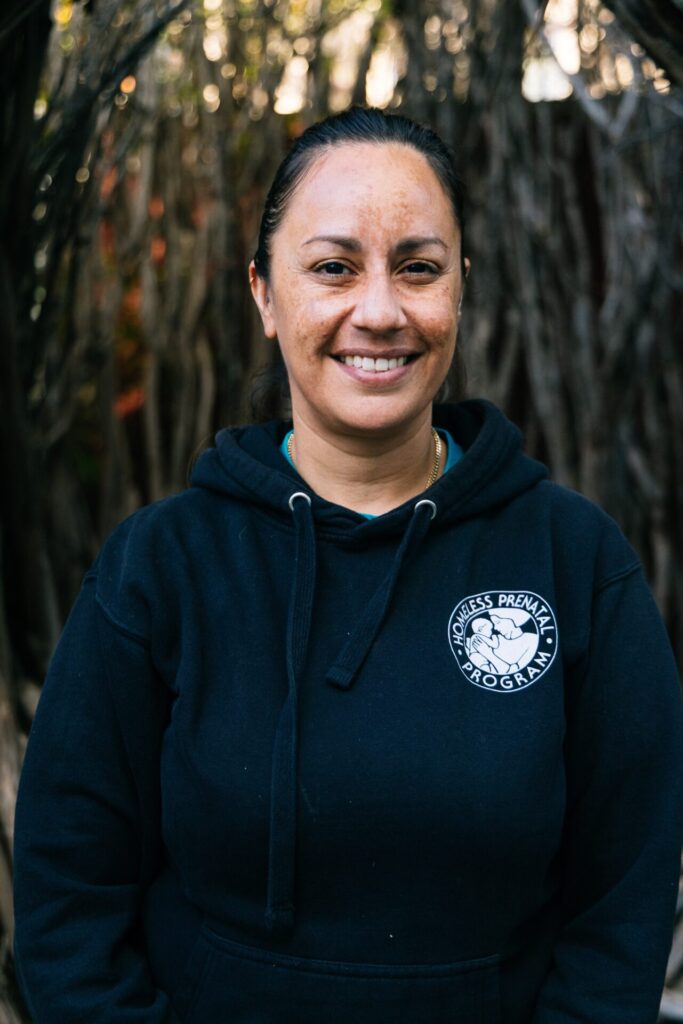
Linda has spent 12 years on HPP’s operations team, helping run the Food Bank’s weekly food distributions. She says stories like Mike’s and Rashawna’s show just how powerful the partnership between HPP and the Food Bank really is. “What’s special about Homeless Prenatal is serving the community and seeing all these beautiful little children thrive,” she says. “It takes a village to raise a child, but it takes a village to raise a community. This is it. This is the village.”
But with shrinking budgets and looming cuts on all levels of government, she’s worried about how much support HPP will be able to provide. And Food Bank contributions are more essential than ever.
“Right now, San Francisco-Marin Food Bank is our only source of fresh fruits and vegetables,” Linda says. “Due to the budget cuts, we no longer have different resources… we rely on the Food Bank.”
She remembers when HPP could assemble Mom Boxes filled with peanut butter, rice, beans, apples, and chicken. They’d then supplement them with Food Bank extras to round out the meal. But those boxes are no longer possible. “Now we’re just giving Food Bank food,” Linda says. “People are thankful, but it’s hard to see a mom walk away without a bag, especially when she’s picking up right before school drop-off.”
That strain isn’t unique to HPP. Across the Food Bank’s network, staff and volunteers are bracing for what comes next. Lucia Ruiz, a Senior Program Manager at the San Francisco-Marin Food Bank, hears that uncertainty every day.
“We don’t know yet exactly how federal budget cuts are going to affect us, but we do expect there could be fewer of certain items coming in,” she says. “What we do know is that we’re incredibly grateful for the support of donors and community members — it’s what allows us to keep these programs going.”
Lucia says it’s that sense of community and commitment to showing up for each other that will carry partners like HPP through these uncertain times
“This pantry is more than a food distribution site,” she says. It’s a trusted hub where families get groceries, diapers, and other essentials,” she says. “Even during the pandemic, they kept their doors open. That tells you what kind of community this is.”


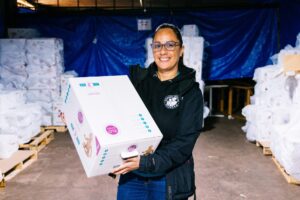 benefits. For families with young children, the cost of diapers adds up quickly. Too often, parents are forced to choose between diapers and food. That’s where CalFresh, the Food Bank, and community partners like Homeless Prenatal Program (HPP) come together. The San Francisco Diaper Bank, a partnership between the SF Human Services Agency and family resource centers like Homeless Prenatal Program, offers a free monthly supply of diapers to CalFresh families with children under two. At HPP, a long-standing Food Bank partner, families can pick up diapers and healthy groceries in one stop. It’s a model of seamless support that strengthens the safety net and addresses the root causes of hunger.
benefits. For families with young children, the cost of diapers adds up quickly. Too often, parents are forced to choose between diapers and food. That’s where CalFresh, the Food Bank, and community partners like Homeless Prenatal Program (HPP) come together. The San Francisco Diaper Bank, a partnership between the SF Human Services Agency and family resource centers like Homeless Prenatal Program, offers a free monthly supply of diapers to CalFresh families with children under two. At HPP, a long-standing Food Bank partner, families can pick up diapers and healthy groceries in one stop. It’s a model of seamless support that strengthens the safety net and addresses the root causes of hunger.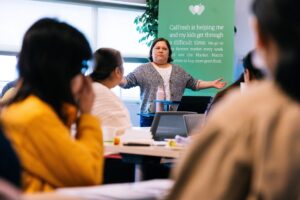 One way we strengthen the region’s CalFresh outreach is by providing training opportunities for our partners who make expanding CalFresh enrollment possible.
One way we strengthen the region’s CalFresh outreach is by providing training opportunities for our partners who make expanding CalFresh enrollment possible.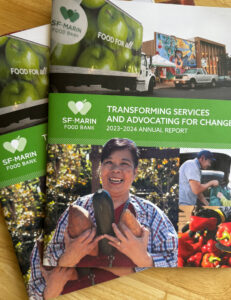 Jean Baker has a joyful smile and ebullient spirit, and both seem to shine prominently on the cover page of the Food Bank’s 2023-24 Annual Report. Now retired, and focused on family and her faith, for years Jean served as a steadfast connection between the Food Bank and participants who came to a food pantry at her church in the Mission District in San Francisco.
Jean Baker has a joyful smile and ebullient spirit, and both seem to shine prominently on the cover page of the Food Bank’s 2023-24 Annual Report. Now retired, and focused on family and her faith, for years Jean served as a steadfast connection between the Food Bank and participants who came to a food pantry at her church in the Mission District in San Francisco.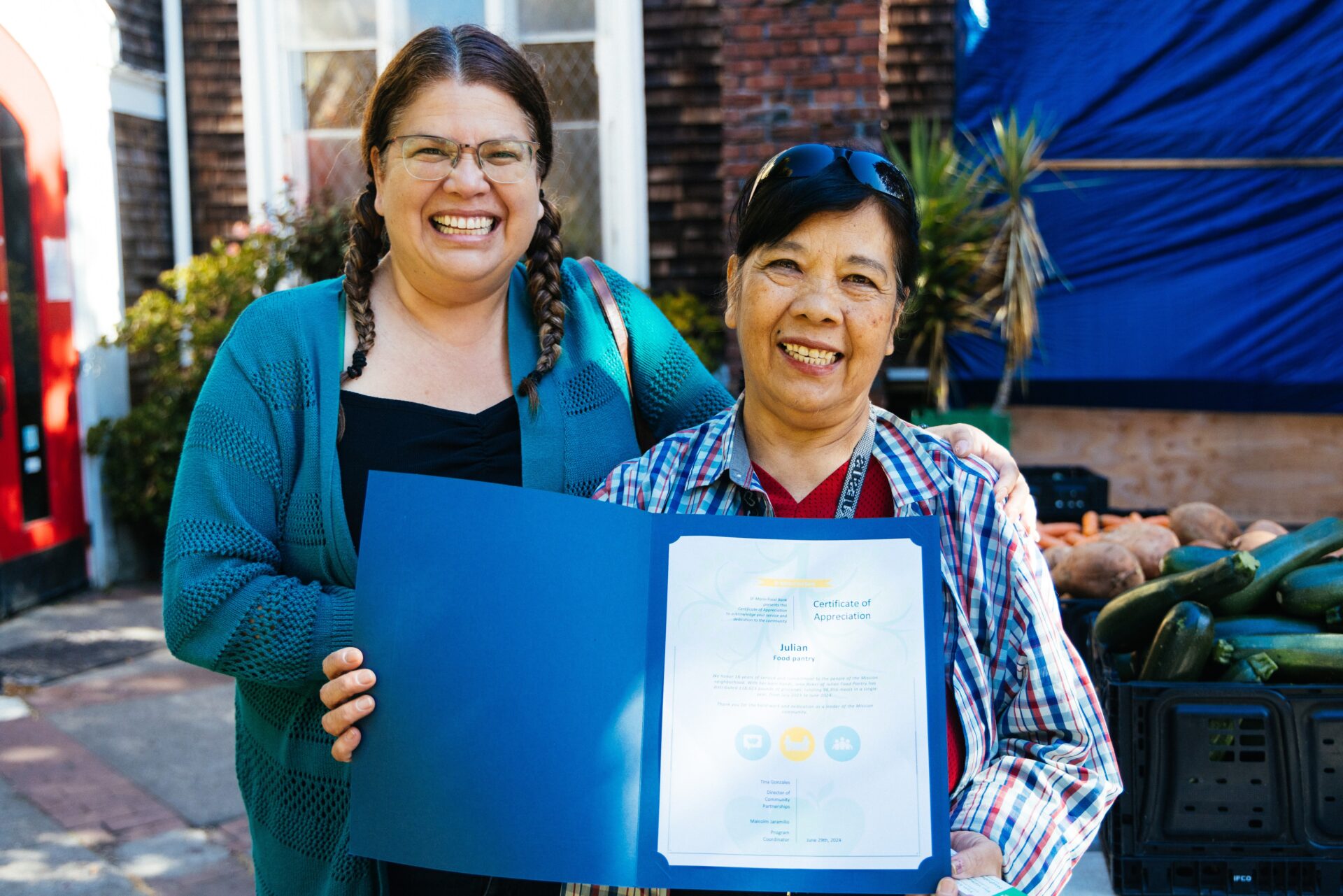
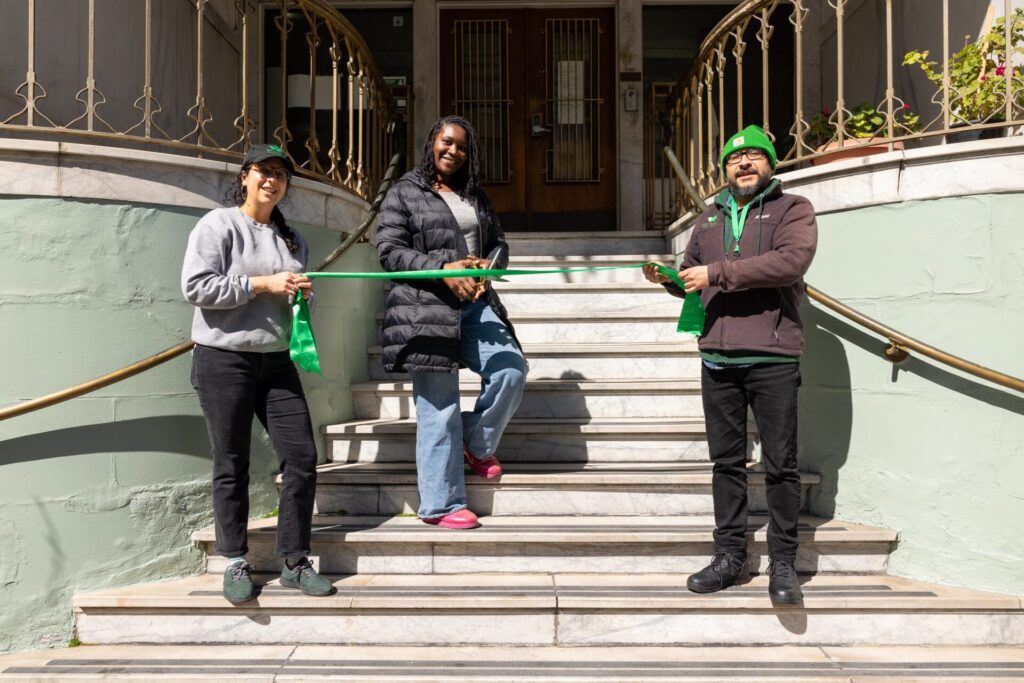 At the Food Bank, we know that food insecurity doesn’t happen by chance. It’s the result of deeper issues like poverty, housing insecurity, and systemic inequality. That’s why we’re proud to partner with Mary Elizabeth Inn, an organization that knows it takes more than meals to create lasting change.
At the Food Bank, we know that food insecurity doesn’t happen by chance. It’s the result of deeper issues like poverty, housing insecurity, and systemic inequality. That’s why we’re proud to partner with Mary Elizabeth Inn, an organization that knows it takes more than meals to create lasting change.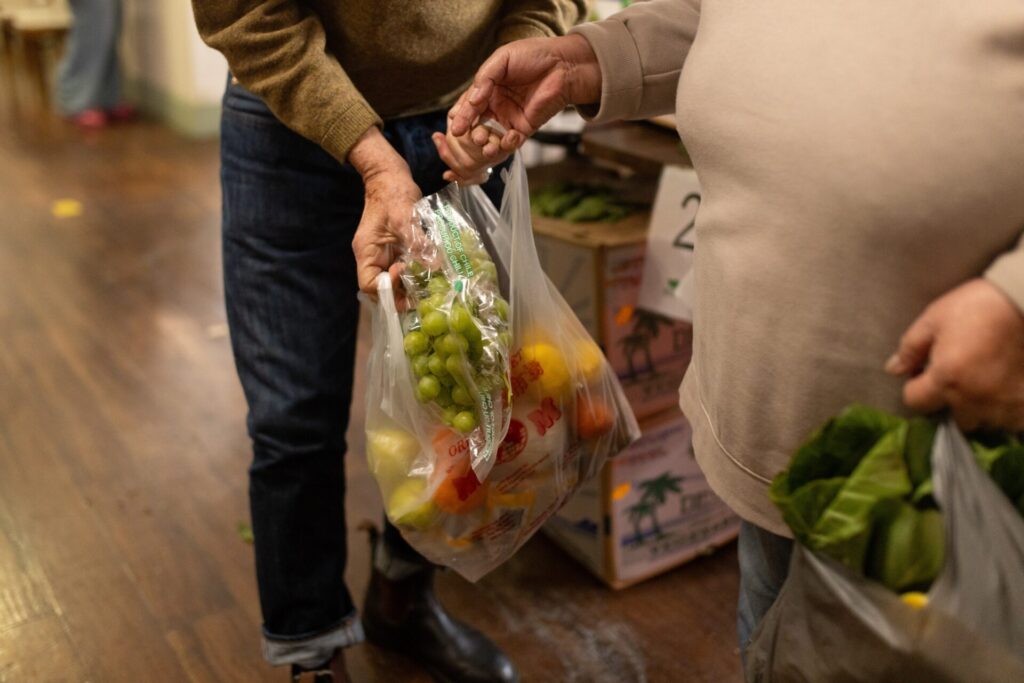 best part about the pantry is that we can tell them where the food is coming from,” said Ebony. “It’s farm fresh, and it’s not going to expire tomorrow. Tables and tables full of vegetables, protein, milk, and more. Way better.”
best part about the pantry is that we can tell them where the food is coming from,” said Ebony. “It’s farm fresh, and it’s not going to expire tomorrow. Tables and tables full of vegetables, protein, milk, and more. Way better.”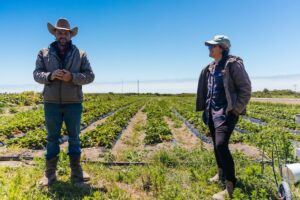 “[We want] to make organic food from small and medium farms not a luxury, but something widely accessible,” says Veronica. “Our model is designed to take that step back from the final consumer, connecting small farms to institutions like the Food Bank to broaden access to fresh, local food.”
“[We want] to make organic food from small and medium farms not a luxury, but something widely accessible,” says Veronica. “Our model is designed to take that step back from the final consumer, connecting small farms to institutions like the Food Bank to broaden access to fresh, local food.”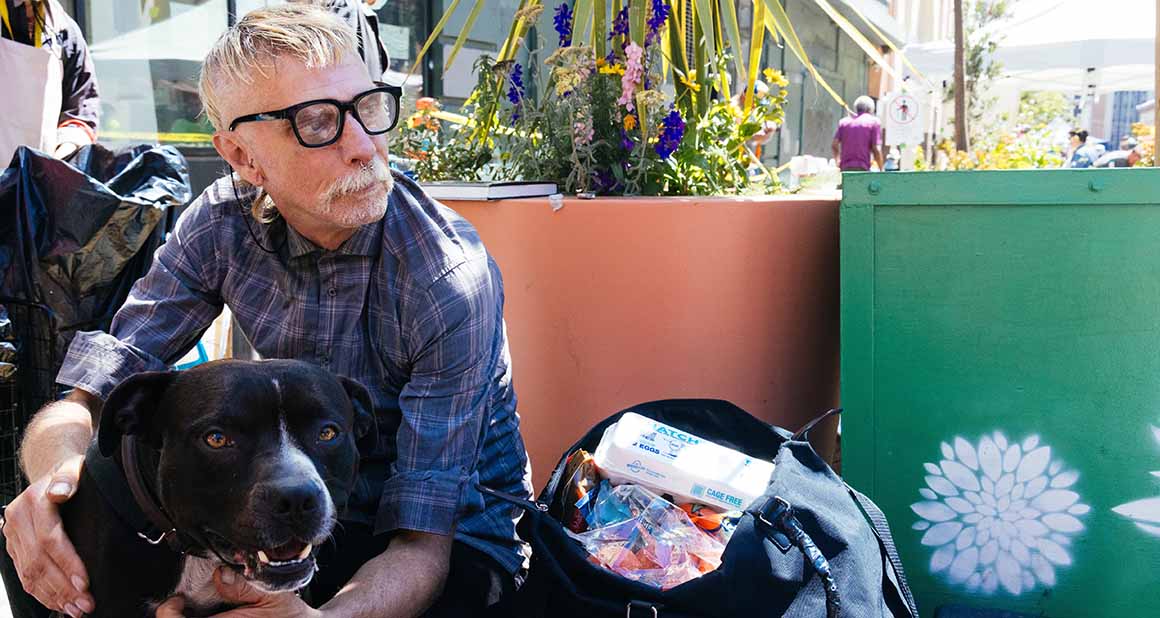
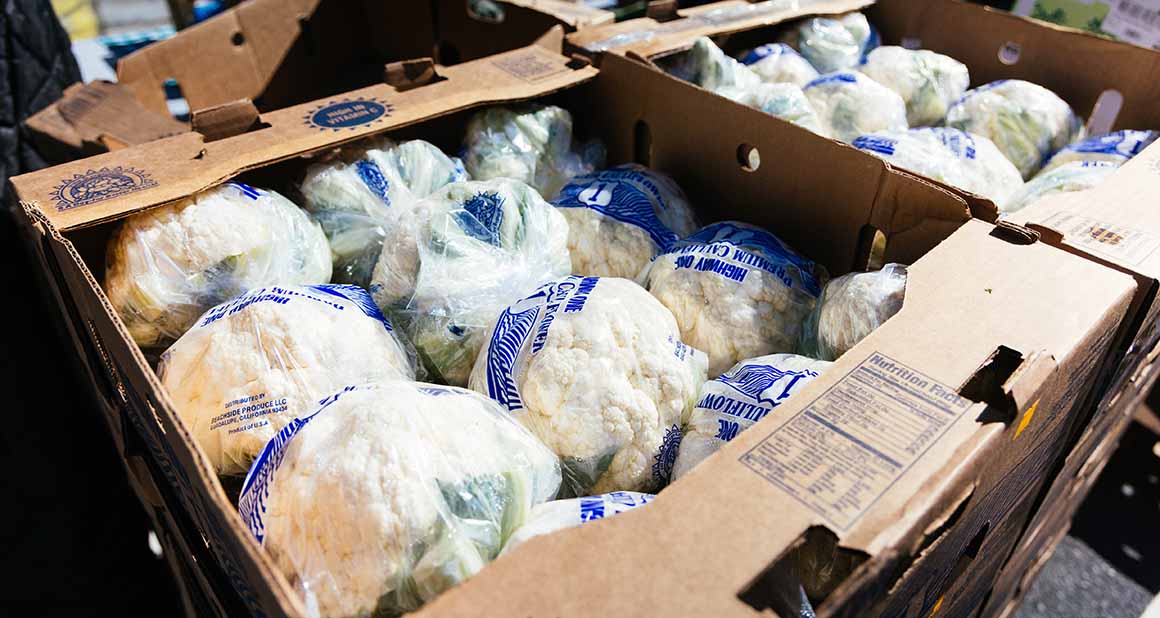 During this period, he rescued le Roi — emaciated and severely abused — from the streets. Nursing le Roi back to health became his mission. “I put him on a high protein, high caloric, high fat diet,” Todd said. With the money the pantry saved him on groceries, he was able to buy quality dog food. Fully recovered, le Roi now “picks up his own leash and walks himself. He plays basketball and body surfs,” Todd beamed.
During this period, he rescued le Roi — emaciated and severely abused — from the streets. Nursing le Roi back to health became his mission. “I put him on a high protein, high caloric, high fat diet,” Todd said. With the money the pantry saved him on groceries, he was able to buy quality dog food. Fully recovered, le Roi now “picks up his own leash and walks himself. He plays basketball and body surfs,” Todd beamed.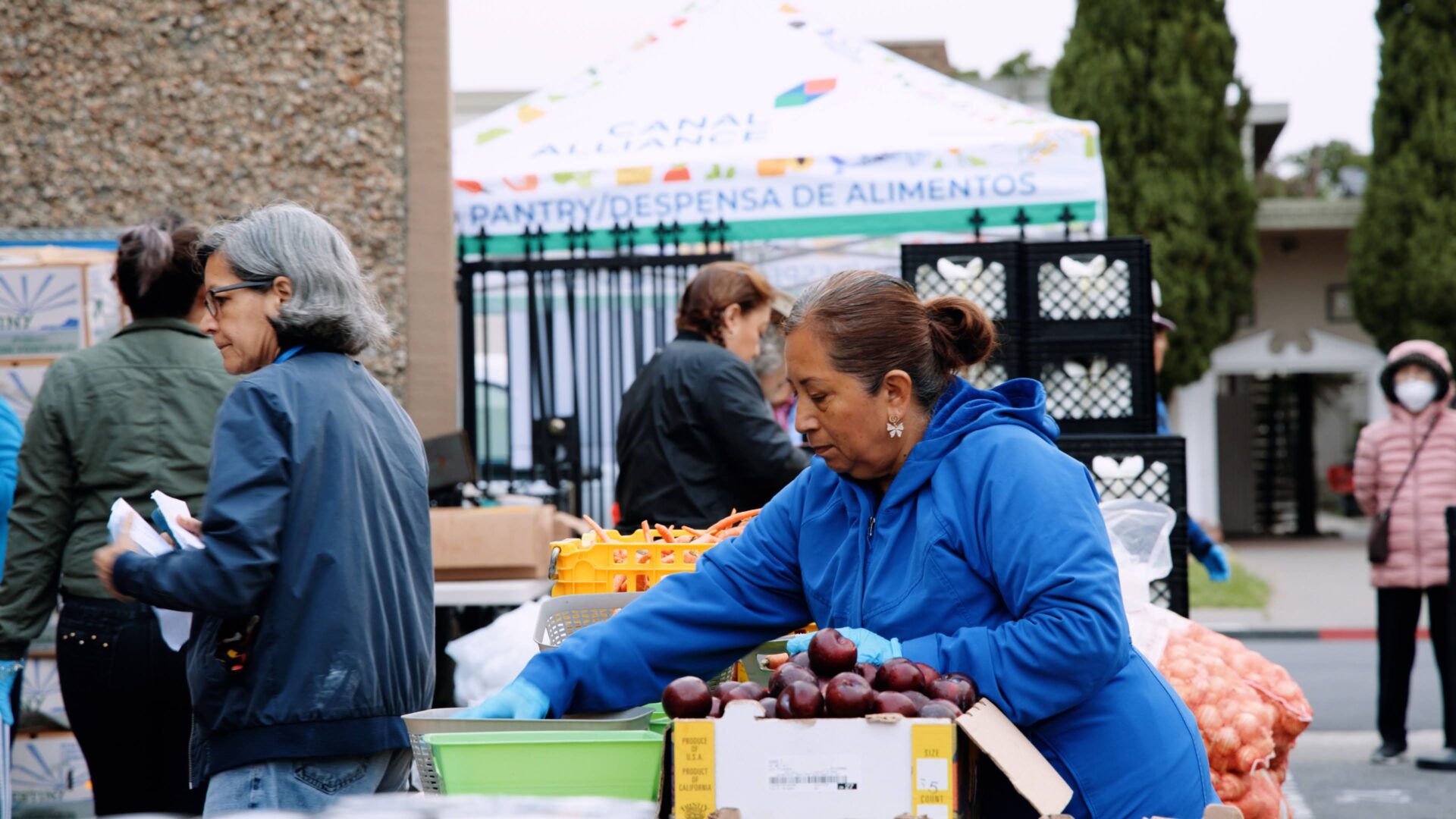
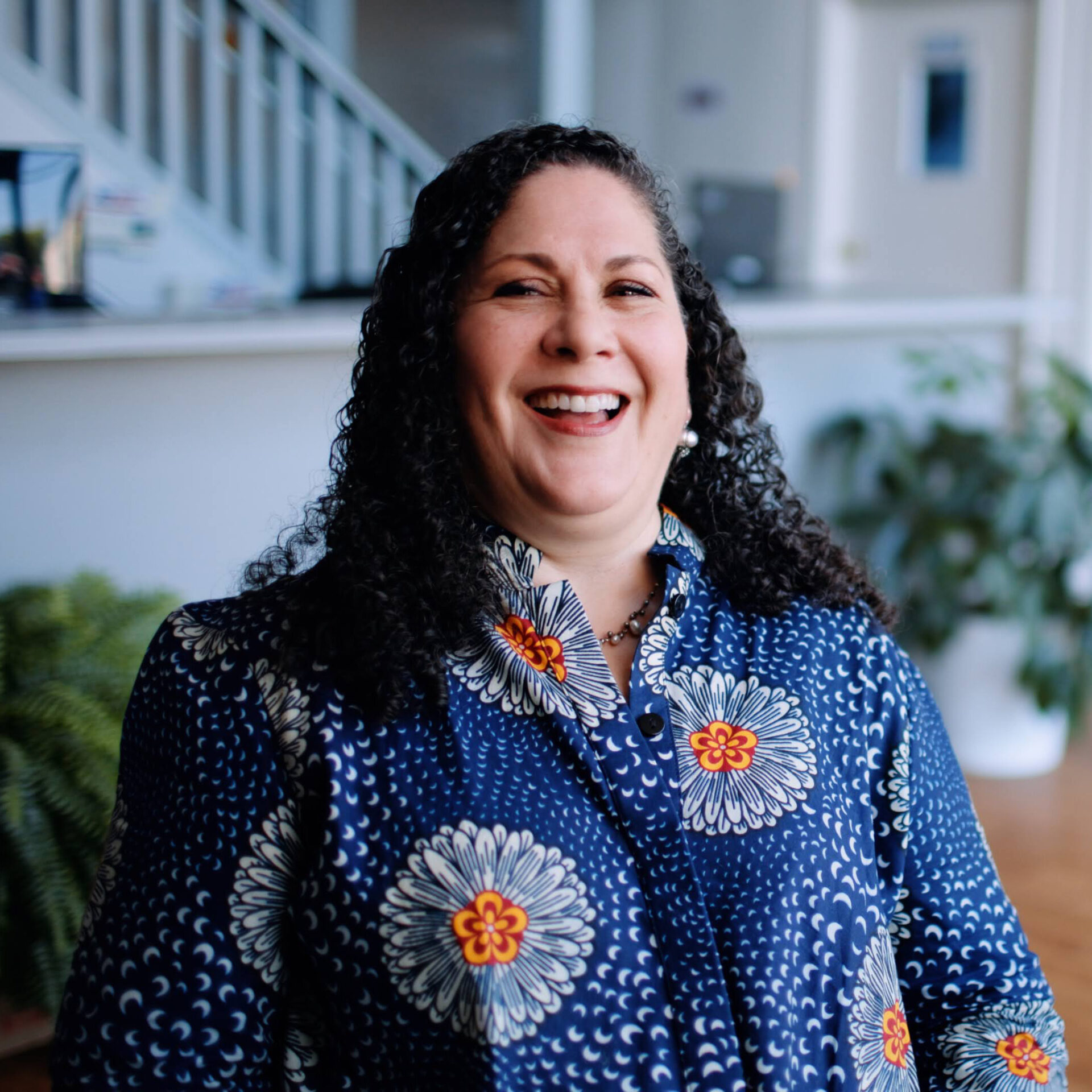
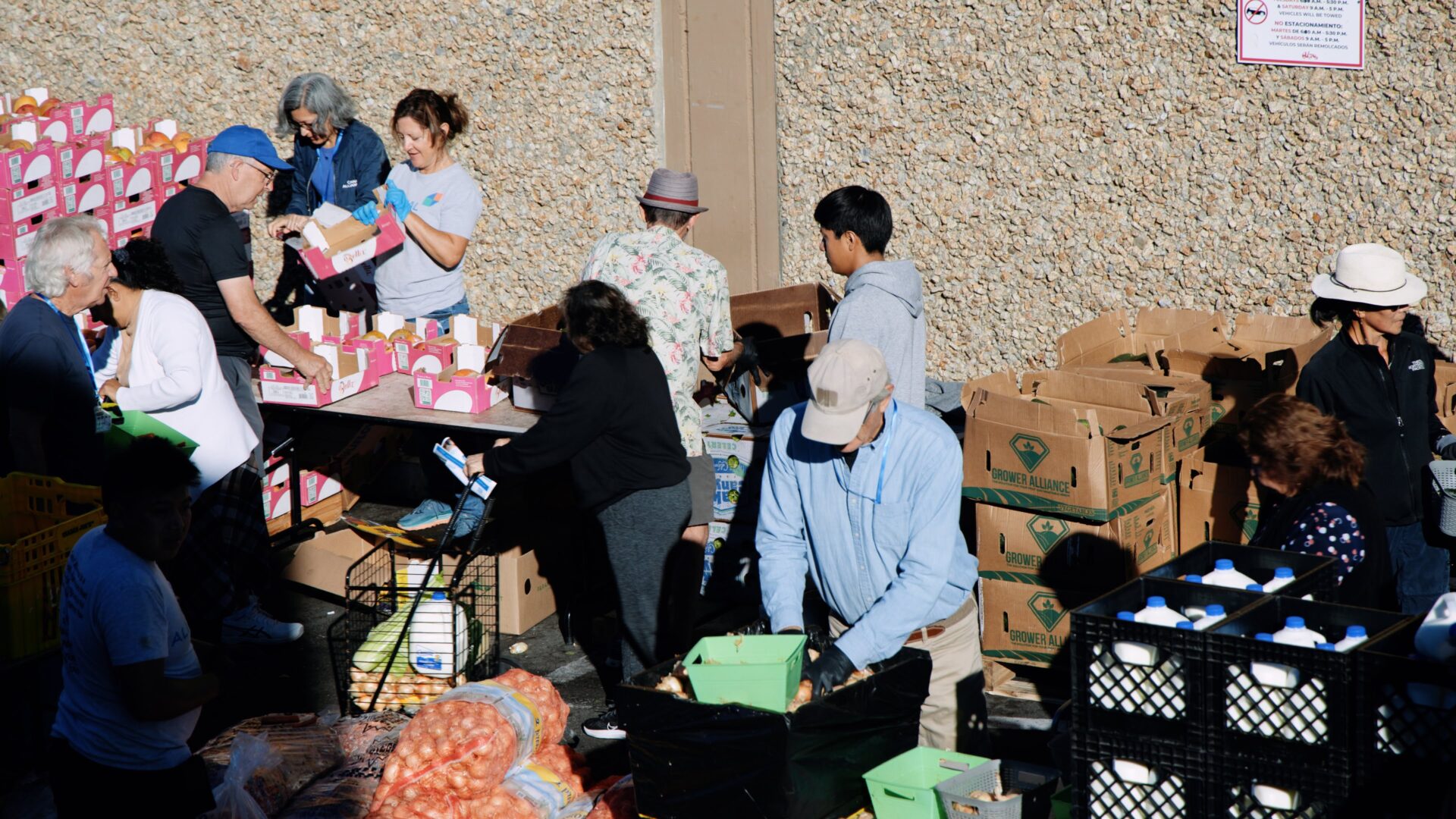

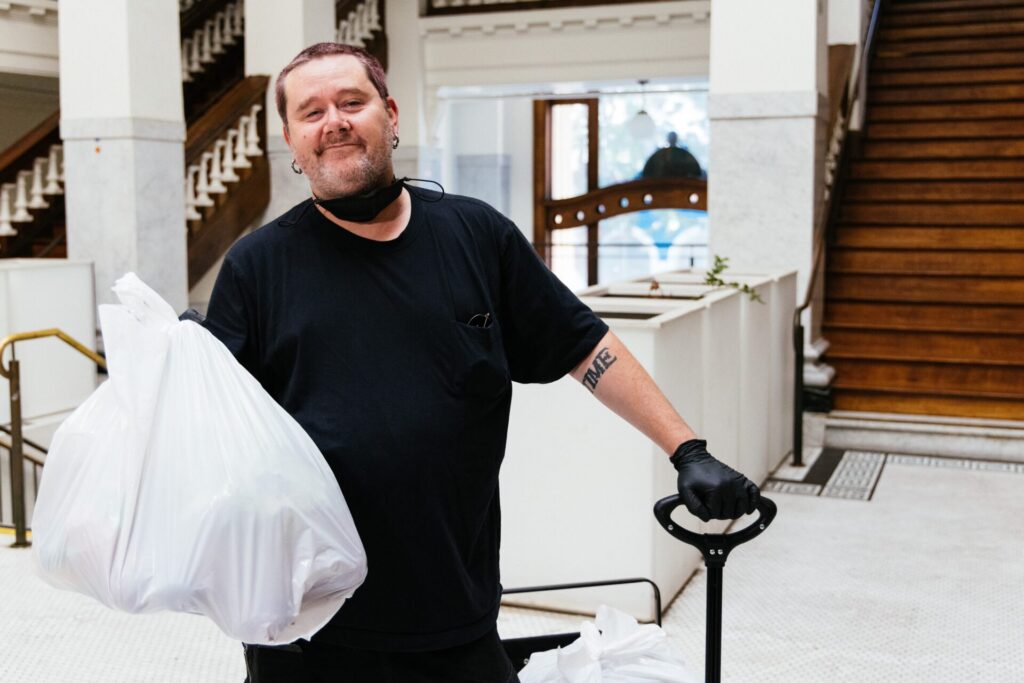
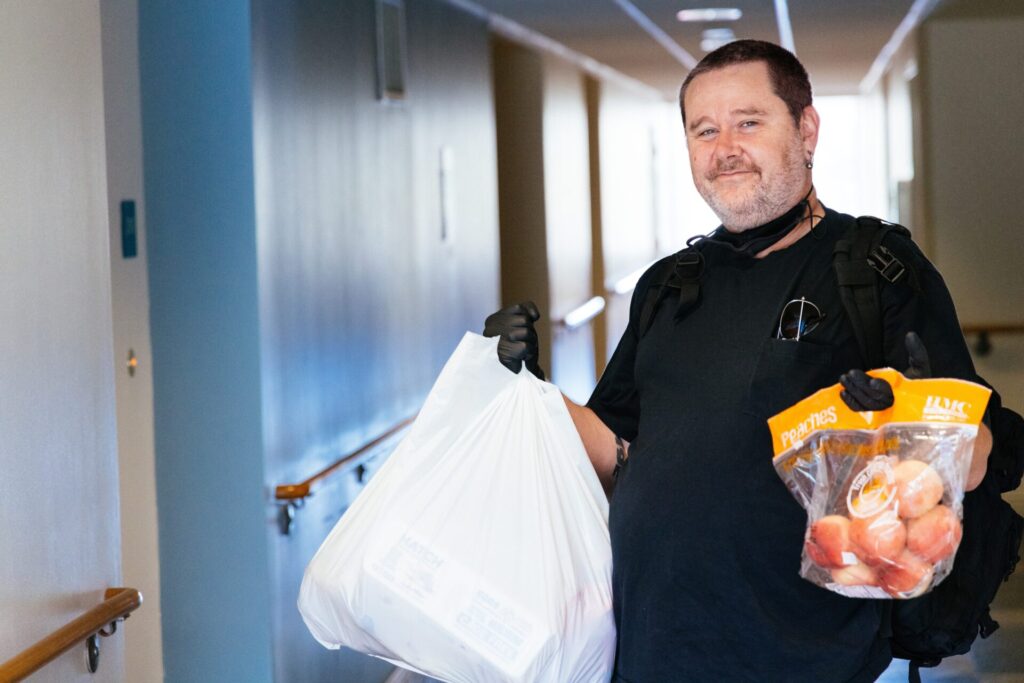
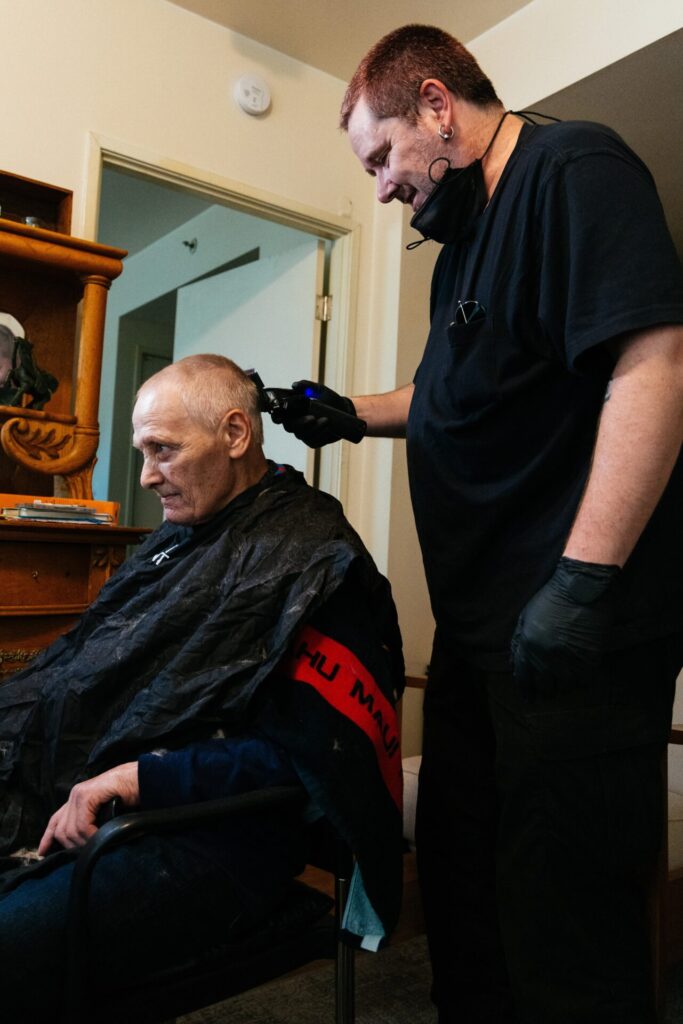
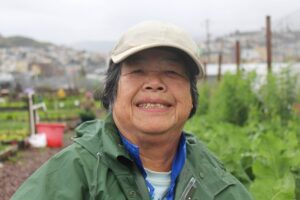 Ms. Chang finished loading up her cart with groceries and beckoned us over to view her most recent crop: a bountiful patch of cauliflower! Each plant boasted a still-growing cauliflower head, already larger than an outstretched hand.
Ms. Chang finished loading up her cart with groceries and beckoned us over to view her most recent crop: a bountiful patch of cauliflower! Each plant boasted a still-growing cauliflower head, already larger than an outstretched hand. 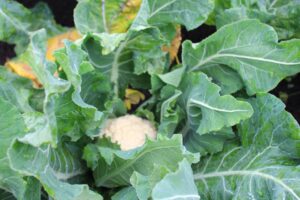

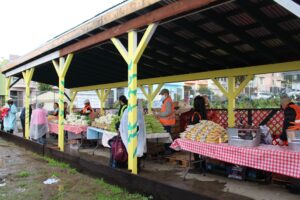 to close because of pandemic precautions, the pantry reopened with the support of the Food Bank back in February of 2023.
to close because of pandemic precautions, the pantry reopened with the support of the Food Bank back in February of 2023. 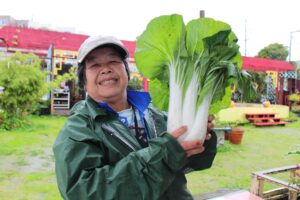 across San Francisco and Marin who are facing similar difficulties. On the Saturday we visited, volunteers laid out items like rice, bok choy, beets, carrots and celery farmer’s market-style, so each participant could take or decline items as they wished.
across San Francisco and Marin who are facing similar difficulties. On the Saturday we visited, volunteers laid out items like rice, bok choy, beets, carrots and celery farmer’s market-style, so each participant could take or decline items as they wished.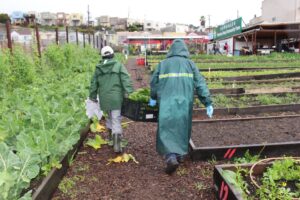 Upon immigrating to San Francisco from Guangzhou, China in the 80s, Ms. Chang worked as a sewist in San Francisco Chinatown’s garment factories
Upon immigrating to San Francisco from Guangzhou, China in the 80s, Ms. Chang worked as a sewist in San Francisco Chinatown’s garment factories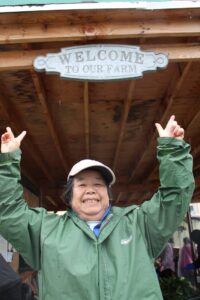 farm, and my family enjoys coming to these events. We throw parties, sing, dance, everything. Y
farm, and my family enjoys coming to these events. We throw parties, sing, dance, everything. Y
Share